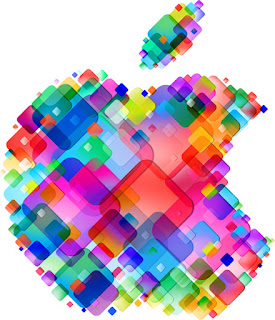
Get ready for an onslaught of high-resolution displays, coming to everyone from smartphones to tablets to laptops to desktops.
A standard desktop computer monitor or notebook PC shows about 100 pixels per inch. An iPad 2 tablet has a sharper screen with a PPI of 132.
Samsung ups the ante with devices like the Galaxy Tab 10.1, an Android tablet with a 1280×800 10.1-inch display. That’s a PPI of 149. Want more? Samsung’s
Galaxy Tab 7.7 crams the same 1280×800 resolution into a 7.7-inch form factor. That’s a PPI of 197.
What? You want more? Apple’s
iPad 3 shows 2048×1536 on a 9.7-inch screen, which computes out to a PPI of 264. And the
iPhone 4/4S is 960×480 on a 3.5-inch screen, which is an amazing PPI of 326.
Photographs, text and icons on those high resolutions are stunning. But they are consum more bandwidth to transmit, more storage, more processing power, more electrical power. The iPad 3’s battery is considerably larger than the battery in the iPad 2, and the iPad 3 also has a stronger GPU. Yet battery life and apparent performance are about the same. The new model needs more horsepower simply to break even.
High resolution is about more than tablets and phones. The Liliputing website reports that we’ll be seeing these types of displays everywhere – desktops, notebooks – in only a year or two. The site’s story “
Intel: Retina laptop, desktop displays coming in 2013” says this is what Intel sees happening in the computer space over the next few years:
Phones and media players with 5 inch, 1280 x 800 pixel displays
Tablets with 10 inch, 2560 x 1440 pixel displays
Ultrabooks with 11 inch, 2560 x 1440 pixel displays
Ultrabooks with 13 inch, 2800 x 1800 pixel displays
Laptops with 15 inch, 3840 x 2160 pixel displays
All-in-one desktops with 3840 x 2160 pixel displays
You should read the story – it does a good job of explaining the relationship between PPI and the viewing distance, and the limits of “retina” displays. At some point, the human eye simply can’t perceive any improvement in resolution.
But as anyone who has compared a iPad 3 or Galaxy Tab to a desktop screen knows, we have a long way to go.
By the way, I don’t want to give the impression that the high-PPI domain belongs exclusively to Apple or the Android tablet makers. Everyone is jumping on this bandwagon. In fact, Microsoft’s Steven Sinofsky has published a fascinating article, “
Building Windows 8: Scaling to different screens,” explaining the company’s take on high-resolution displays. Read it to learn why 1024×768 screens are the bare minimum for those that use Metro-style user experiences.
Z Trek Copyright (c) Alan Zeichick




